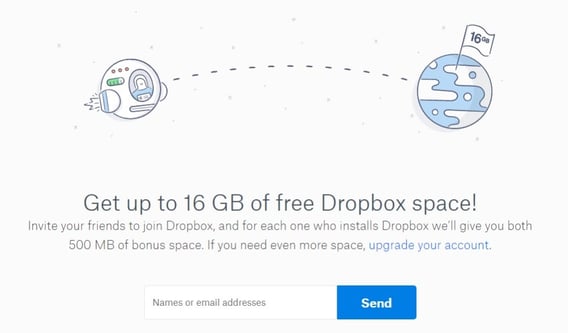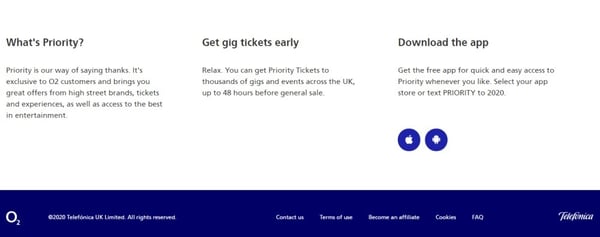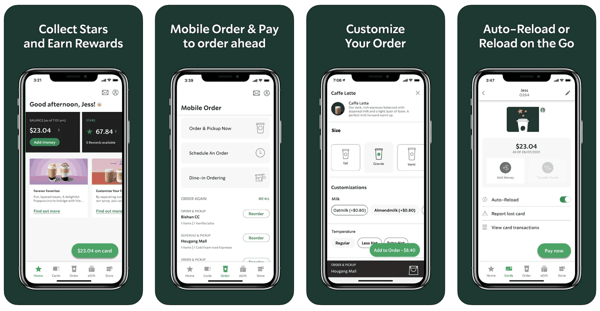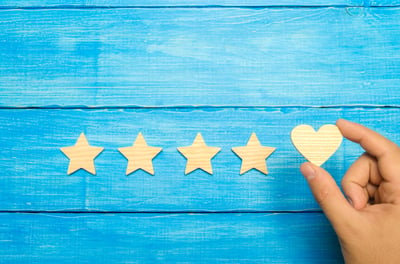July 18, 2025
 by Sam O'Brien / July 18, 2025
by Sam O'Brien / July 18, 2025

You’ve optimized your landing pages, fine-tuned your email flows, and tested your ad creative, yet customers still drop off before converting. Sound familiar?
Maybe you’ve tried everything from SEO and social media to cold outreach and content marketing. But today, attention is short, loyalty is fragile, and traditional channels aren’t always enough to move the needle.
Sometimes, the most effective marketing move is also the simplest: reward your customers. And that’s where incentive marketing comes in.
Incentive marketing is a strategy that uses rewards such as discounts, gift cards, or loyalty points to motivate customers to take specific actions, like making a purchase or referring others. This approach boosts engagement, drives conversions, and strengthens brand loyalty through tangible benefits.
Someone who’s reading your pages or other material is already interested in what you offer. By offering a reward or incentive, you encourage them to take the next step in their customer journey. From global brands to scrappy startups, incentive marketing has become a go-to strategy for driving conversions, referrals, and repeat engagement without reinventing your entire funnel.
Many brands use loyalty management software to identify repeat customers and reward them for their continued support. Others run referral campaigns, offer exclusive perks, or launch giveaways to drive engagement and action.
So what kinds of incentives actually work? And how do you build a strategy that goes beyond discounts and quick wins?
Let’s break down the types of incentive marketing, the psychology behind them, and how you can use rewards to turn interest into long-term growth.
Incentives work because they give people a reason to act. Whether it’s a discount, freebie, or early access, a well-timed reward can turn interest into action. Here’s why brands rely on them:
And the data from KPMG backs it up:
Incentive marketing works because it aligns customer motivation with business goals. Customers feel like they’re winning, and so do brands.
And it isn’t just for enterprise retailers or coffee chains. It works for SaaS platforms, e-commerce brands, local shops, hospitality businesses, and even digital apps. If your goal is to increase engagement, referrals, or repeat purchases, the right incentive strategy can help.Marketing is how you attract those new customers or clients, and keep them away from your rivals. Incentive marketing can play a crucial role in your overall strategy.
The following are some straightforward yet effective incentive marketing ideas. You can pick and choose those most suited to use on your customers.
| Incentive marketing tactic | How it works | Best for | Example |
| Loyalty programs | Reward repeat customers with points or perks | E-commerce, retail, food service | Starbucks Rewards has 34.3 million members in the U.S alone |
| Referral bonuses | Customers earn rewards for bringing in new users | SaaS, DTC, marketplaces | Dropbox's Get More Space referral campaign led to a 3900% increase in registered users |
| Premium membership perks | Paid tiers offer VIP benefits | Subscription brands, retailers | Amazon Prime members get delivery, shopping, streaming, reading, and other benefits with one membership. The program has 200 million+ members. |
| Exclusive pricing | Members or top spenders get access to better prices | B2B, wholesale, loyalty programs | Sephora’s tiered Beauty Insider loyalty program drives the majority of the brand's sales |
| Early access campaigns | Give insiders first access to products or sales | Fashion, music, e-commerce, SaaS | ChatGPT offers early access to its advanced AI models to Plus and Pro users |
| Sweepstakes and contests | Free entry with the chance to win, drives leads, or UGC | DTC, CPG, small business | Lay’s "Gotta Have Lay’s" sweepstakes campaign boosted brand visibility with user-generated content |
Let's see each type of incentive marketing idea in detail.
When people talk about incentive marketing, they’re often thinking about the digital world. So much business gets done online these days that such an assumption is natural. Marketing incentives work for - and get used by - companies both online and off, however. Loyalty programs are a prime example. Such incentives are a staple of all kinds of businesses, for the simple reason that they work really well.
At the most basic level, a card that you can get stamped to give you a free coffee or haircut is a loyalty program. Anything that incentivizes customers to stick with a brand by providing some form of reward is also a loyalty program. These programs are effective because people like to feel appreciated. They enjoy thinking that companies are grateful for their custom, and they value great customer experience.
For that reason, 69% of consumers say that whether they can get loyalty points impacts their choice of retailer. If you’re in a position to run a loyalty program that’s free for customers to join, you should. It’s as simple as that.
Another common type of marketing incentive is a referral bonus to bring in new custom. This type of arrangement is a win-win for firms and customers alike and is particularly effective with affiliate marketing. That’s definitely how you should sell it to consumers if you do implement the idea.
Once again, the premise is refreshingly simple. You offer existing customers a reward if they recommend you to others. That could be a straightforward monetary bonus or something specific to your products.

Dropbox runs one of the most successful referral programs.
Referral programs work particularly well for e-commerce websites and other online businesses. Such firms can make it straightforward for customers to recommend them. They can also track whether those referred actually do go on to become paying customers.
Reviews and other kinds of word-of-mouth marketing, too, are influential in the digital world. If you don’t already use social listening to see what people say about your brand online, you should start.
Not all marketing incentives work in precisely the same way. Most offer a financial reward or a prize for customers who make a purchase or take another action. Some add new and desirable features to a product or service. That's when customers take out a premium membership.
This is a slightly different way of rewarding your most loyal customers. They have to pay for their heightened level of membership, but the benefits are worth it. That’s especially true for those regular users of your product or service. Amazon Prime is the highest-profile example of this kind of marketing incentive.
These incentive marketing ideas are about inspiring and rewarding customer loyalty in one fell swoop. Giving access to exclusive prices for the most reliable customers is another example. It’s a superb way to show consumers how much you value them and their custom. Such a show of gratitude can be particularly impactful when many people feel loyal customers miss out.
Incentivized pricing can also have a further positive impact on your business. Customers will know they get a better price for buying a particular volume or using your service a specific amount. As a result, they may make more effort to reach those thresholds. Thus, your marketing incentives boost customer loyalty and turnover at the same time.
If you release new lines or run special offers, you may want to provide them to loyal customers before anyone else. That’s another tried and true form of incentive marketing. It’s a method often employed in the entertainment and leisure industry. Think about the last time you saw tickets for a concert or gig go on sale. You probably noticed that some people could buy them first. That might have included members of the fan club, users of a particular sponsor’s product, and others.

O2’s priority tickets are an example of incentive marketing
This is a great incentive marketing idea to consider. You give up very little and could still get abundant rewards. By giving some customers early access to products or promos, you create a sense of urgency. That’s an excellent way to boost sales. On top of that, you’re still rewarding loyal customers and aiding retention.
Marketing email lists and unified communications as a service (UCaaS) platforms, too, make this technique simpler. It’s quick and straightforward to reach out to all your existing customers.
Incentive marketing isn’t all about inspiring people to buy from your brand. Sometimes, a successful marketing incentive is one that helps you gather new leads and information. Sweepstakes and contests are highly effective techniques in this regard.
Many firms use giveaways to persuade people to give them their email address or fill in a short survey. The former gives your brand a new channel through which to reach potential customers. The latter provides potentially invaluable detail on your target audience.
Sweepstakes and contests are easy for even smaller businesses to run. You can appear generous, after all, without breaking the bank. One very desirable prize will delight entrants to your competition. It doesn’t have to make much of a dent in your budget.
Whatever your niche, your brand must use everything to aid your marketing strategy. If your main focus is to find new customers or to keep those you’ve got, the more marketing weapons you have, the better.
Let’s take a look at some notable incentive marketing campaign examples and the benefits they’ve delivered.
Two leading brands provide a superb example of how impactful loyalty programs can be. Starbucks runs one of the most famous loyalty schemes in the world. Their rewards card and mobile app helped significantly boost sales after its launch.

It also made Starbucks a target, however. When the coffee brand changed its loyalty scheme, rivals Dunkin’ Donuts aimed at it. What ensued was a pitched battle over rewards programs. The firms waged a PR war about which offered a better deal to consumers.
Two world-renowned brands clearly see incentive marketing as a vital battleground – one on which to try and get an advantage over one another. It’s not a marketing technique that any organization can afford to ignore.
We discussed Amazon Prime and its success as an incentive marketing technique earlier. It’s well worth giving it some more attention, though. In a way, Prime combines a few of the versions of incentives we discussed earlier. It’s similar to a loyalty program in that it’s most beneficial to more regular Amazon customers. It also provides extra features to customers who upgrade to a Prime membership. Throw that you can also get a free trial, and Prime shows another incentive marketing hallmark.
However, you categorize Prime, there’s no question it’s been a profound success for Amazon. That’s a testament to both Amazon’s clout as a brand and the effectiveness of the Prime program.
Prime is a particularly smart example of incentive marketing. That’s thanks to its innovative nature. Starting as an offer of free or speedier delivery, the scheme has expanded over the years. Now, Prime members get all manner of features, not to mention access to the firm’s subscription TV service.
Amazon has turned a comparatively simple premium membership into so much more. Prime is a loyalty program and incentive for new customers; all rolled into one.
We did say that incentive marketing gets leveraged by the world’s best-known brands. Now that we’ve followed Amazon with McDonald’s in our examples, it should be apparent that we weren’t kidding. The fast food brand’s Monopoly-themed sweepstakes contest has run for decades. It’s among the best-known examples of incentive marketing in the world. That makes it an extraordinarily long-lived marketing exercise with a remarkable history.
Despite some less favorable episodes in the past, the scheme has still delivered for McDonald’s. The contest has become akin to an institution, and has given away millions of dollars in prizes. Its annual implementation is an event that people eagerly anticipate. National newspapers around the world even run stories about it. If that’s not an example of how beneficial a good marketing incentive can be to brand awareness, nothing is.
Launching an incentive marketing campaign doesn’t have to be complex. Whether you’re a SaaS brand rewarding referrals or a DTC store testing loyalty perks, the key is to start simple and stay aligned with your business goals. Here’s a step-by-step approach:
Start by identifying the behavior you want to drive. The goal will shape everything else, from the type of incentive to the messaging.
Establish your primary goal, but also track secondary KPIs like cost per acquisition (CPA), referral rate, or customer lifetime value (CLV). These will help you measure ROI beyond just clicks or redemptions.
Example: Want to increase reviews? A small thank-you gift card might work better than a discount.
A good reward is relevant, valuable, and cost-effective. That doesn't always mean handing out discounts.
| Objective | Audience type | Effective incentive |
| Drive sign-ups | Price-sensitive shoppers | Dollar-off coupon, free trial |
| Drive referrals | Product evangelists | Store credit, gift cards, donations in their name |
| Drive loyalty | Repeat customers | Points, tiered perks, VIP access |
| Drive reviews | Satisfied customers | Low-value gift card, discount on next purchase |
Avoid blanket rewards. Not all customers value the same thing. Some prefer cash, others love exclusivity, and some want recognition (like leaderboard status or badges). Look at past campaign data or run a survey to test what resonates before rolling out at scale.
This is where many brands lose trust. Vague or hidden terms lead to confusion and drop-off. Keep the rules:
For complex campaigns, create a short FAQ or explainer pop-up to walk users through the flow. Avoid friction. If someone has to email support to redeem a reward, you’ve already lost them.
Manual campaigns don’t scale, especially when you’re juggling referrals, rewards, and redemptions across multiple touchpoints. The right software can help you automate workflows, track performance, and optimize campaigns without adding operational overhead.
Here are the key G2 categories to explore based on your incentive marketing goals:
Each category solves a different piece of the incentive puzzle. So, choose based on your campaign type, audience, and internal resources. When choosing a tool, look for:
If no one sees your incentive, it won’t work, no matter how great the offer is. Here are some best-performing touchpoints you can consider, depending on your channels:
Dropbox added its referral offer directly inside the app onboarding, making it frictionless and visible at the right moment.
The best incentive marketers treat campaigns like experiments. Track both leading and lagging metrics:
If the campaign is underperforming, ask:
A/B test changes to copy, placement, reward type, or eligibility rules. Small tweaks can drive big results.
You’ve got your incentive, your tools, and your campaign live. Now what? Success in incentive marketing isn’t just about what you offer. It’s about how you structure the experience, respond to customer behavior, and stay compliant as you scale.
Here’s how to get it right and what to watch out for:
Popular incentives include loyalty programs with points or discounts, personalized offers based on purchase history, early access to new products, and referral bonuses. Just as important are consistent product quality, responsive customer support, and experiences that make customers feel valued and understood.
Referral programs reward existing customers for bringing in new ones. Typically, a user gets a unique referral link they can share. When someone signs up or makes a purchase through that link, both the referrer and the new customer receive a reward—like store credit, discounts, or a gift.
Sweepstakes and contests generate buzz, grow email lists, and increase social sharing. They’re especially useful for top-of-funnel growth when you're trying to attract new audiences quickly.
Yes. Depending on your campaign type, consider:
These tools can help streamline setup, track performance, and scale your programs efficiently.
Absolutely. But they work best when tailored, timely, and connected to real value. Today’s consumers are more selective, so generic offers won’t cut it. The future of incentive marketing is personalization, automation, and seamless integration across the customer journey.
Incentive marketing is a potentially lucrative avenue for any brand to explore. That’s whether you want to find new customers or reinvigorate those you already have. This strand of marketing is one that excels in aiding both customer acquisition and retention. Contests, referral bonuses, and loyalty programs, after all, have universal appeal.
It’s easy to try some of the clever techniques listed above. Not all of them will suit your brand or customers. You only need one effective scheme or contest, though, to see a benefit. Get it right, and you could taste similar success to the world’s leading brands, which already make incentive marketing work for them.
Retention will bring no results unless your audience engages with your brand. Learn what customer engagement means for a business.
The article was originally published in 2023 and has been updated with new information.
Sam O'Brien is the Director of Digital and Growth for EMEA at RingCentral, video conferencing and call center software provider. Sam has a passion for innovation and loves exploring ways to collaborate more with dispersed teams.
Potential customers always ask their friends and family for recommendations before buying a...
 by Megan Mosley
by Megan Mosley
If there's one thing working in marketing has taught me, it's that keeping existing customers...
 by Harshita Tewari
by Harshita Tewari
Loyal customers weave a story for your business that no other stakeholder can.
 by Dwayne Charrington
by Dwayne Charrington
Potential customers always ask their friends and family for recommendations before buying a...
 by Megan Mosley
by Megan Mosley
Loyal customers weave a story for your business that no other stakeholder can.
 by Dwayne Charrington
by Dwayne Charrington


